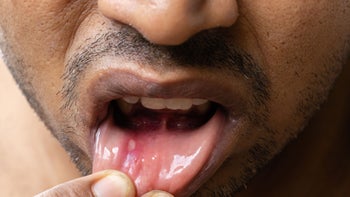
How Much Does It Cost to Have a Tooth Extracted?
Key takeaways:
The price of a tooth extraction depends on factors such as the tooth’s condition, the type of anesthesia you need, and how much time the procedure takes.
Dental insurance plans typically cover some but not all of your extraction costs. For a simple extraction, without insurance, you may pay up to $300 per tooth.
After an exam, your dentist can give you a more specific price estimate for the extraction.

All toothaches are troublesome, but some are just unbearable. If your tooth is too severely damaged or decayed to be restored, your dentist may recommend an extraction.
Unfortunately, dental issues can cause pain in the wallet, too. But knowing what costs to expect for a tooth extraction can ease the discomfort a little bit.
To help you financially prepare for the cost of getting a tooth pulled, here’s a look at many factors that can affect your final bill.
Search and compare options
Does dental insurance cover the cost of tooth extractions?
If you have dental insurance, your plan should cover some of the costs of a tooth extraction and related expenses. (More on this below.) If you don’t, you can buy stand-alone dental insurance through the health insurance marketplace or elsewhere online.
The type of dental insurance you have determines how much you'll have to pay out of pocket. The two most-common plan types are dental preferred provider organizations (DPPOs) and dental health maintenance organizations (DHMOs).
DPPO plans
DPPO plans are built around coverage formulas. For example, you might have a 100/80/50 plan for dental providers. With this plan, the insurer would reimburse you:
100% for preventative care
80% for basic restorations like fillings and extractions
50% for major procedures like root canals
Your out-of-pocket cost for preventative care would be zero. After you meet the deductible, you’d pay 20% of the cost for basic restorations, and 50% for major procedures.
Nonsurgical dental extractions are usually considered basic services. But if you need oral surgery to have your tooth extracted, your plan might consider it a major restorative procedure. This means that, with a plan structure like 100/80/50, you’d be on the hook for half of the cost, instead of $0. It’s worth contacting your insurer or checking your plan documents ahead of time to find out.
Typically, a DPPO plan provides the same coverage formula whether the dentist you see is in or out of network. Staying within your network is easiest and potentially cheaper, as in-network dentists contract with the insurer to offer lower rates.
Worried about wisdom teeth? Here’s how much it costs to have your wisdom teeth removed, and which factors impact the price of this routine surgery.
Is a dental savings plan right for you? If you don’t have dental insurance, you might benefit from a membership program. We’ll explain how dental savings plans can help you save, and keep your teeth in good shape.
Deducting your dental care: Certain dental expenses, including extractions, are tax deductible if they’re deemed medically necessary. Find out how to claim dental care on your taxes.
More savings tips: Going to the dentist can be costly, but you can still find workarounds and take care of your teeth. Here are some creative ways to save on dental care that you might not have thought of or tried before.
DHMO plans
DHMOs make you select a primary dentist or dental facility to provide and manage your care. These plans will reimburse you only for procedures by in-network dentists. They generally charge lower monthly premiums than DPPOs and don’t have deductibles.
DHMOs cover all costs except for your copay. Bear in mind that the amount of the copay will differ, based on the dental procedure. For example, a simple tooth extraction might only be a $35 copay, while a more complicated surgical extraction might have a $215 copay. Review your policy to see what the amounts are for you.
Coverage from other health insurance
Original Medicare doesn’t cover dental services, but many Medicare Advantage plans do. And although medical insurance plans often don't cover dental procedures, they might cover the cost of general anesthesia.
In all cases, you’ll want to verify the details of your coverage before getting your tooth pulled.
Does dental insurance cover the cost of anesthesia?
If the anesthesia is medically necessary for the extraction, your dental insurance plan probably covers it. However, some people elect to have anesthesia or sedation to calm their anxieties about the procedure. In such cases, an insurer might well consider the anesthesia nonessential and decline to cover it.
If you do have to pay out of pocket for your anesthesia, here’s an idea of what to expect:
Local anesthesia (by injection) is typically included in the extraction price.
Nitrous oxide should cost $50 to $60 for each half-hour of use.
General anesthesia for oral surgery may cost about $250 for the first hour. Afterward, the dentist may charge around $200 per 15-minute increment. The longer you need to be asleep, the more you’ll pay.
How much is a tooth extraction without insurance?
A simple extraction without insurance costs between $75 and $250. For a surgical extraction, however, prices can go up to $300 a tooth or more.
The price you pay depends on factors like your tooth’s condition and the type of extraction and anesthesia you need.
Tooth condition
The condition of your tooth is one of the first things your dentist considers when determining the cost of the extraction. For example, if your tooth is “erupted” (exposed) above the gum line and can be removed quickly in one piece, your procedure cost will be at the lower end of the price range.
But if your tooth is badly damaged or decayed, it’s going to be harder to extract. Your dentist may even need to pull it out in pieces. A good rule of thumb is that the more complicated or time-consuming the procedure, the more you’ll have to pay.
Procedure and anesthesia type
There are two types of dental extractions: simple and surgical.
Simple extraction: Less invasive than surgery, this procedure only requires local anesthesia to numb your mouth. After that, it should take just a few minutes for the dentist to get the tooth out.
Surgical extraction: For teeth that are impacted or stuck under the gum, you might need surgery and a bigger dose of local anesthesia. Your dentist may even put you to sleep with general anesthesia while they do the additional work. After the tooth is gone, you may need stitches.
Surgical extractions cost significantly more because they take longer and are more complicated. The procedure may cost up to $550 per tooth. If your tooth is impacted, and you have other complications, the bill could be up to $800 per tooth.
What are some potential additional fees that might arise from a tooth extraction?
Whenever you have dental work done, there might be some unexpected expenses. Here are a few of them:
Preliminary dental exam: Before a dentist pulls your tooth, you’ll need an initial dental exam, costing from $50 to $150 or more.
X-rays before the extraction: These images help your dentist check the condition of your tooth and determine the extent of your decay. X-rays can add as much as $200 to your cost.
Antibiotics: If your extracted tooth is infected, you may need a course of antibiotics before or after the procedure. Your medical insurance might cover these prescription drugs, but your dental insurance probably won’t. Medications commonly used for dental infections include metronidazole, clindamycin, and amoxicillin — generics that often cost less than $20 for a 2-week course.
Follow-up care: You may need to go back to the dentist for evaluation a few days after your extraction. The fee for a follow-up visit may or may not be included in the overall treatment plan cost. Just in case it’s not, be ready to pay for another exam.
Aftercare supplies: You may need to purchase medical supplies such as gauze or an irrigation syringe to use for cleaning the extraction site. You might also need to buy pain medication, such as ibuprofen (Advil) or acetaminophen (Tylenol).
How can I pay for a tooth extraction if I’m uninsured but need my tooth pulled out now?
If you need an aching tooth pulled, don’t put the procedure off because of cost. Even without dental insurance, you have options to help you pay for the extraction:
Provider payment plan: Many dental offices allow you to make monthly installment payments on your dental work. Talk to your dentist about their payment options to see what’s available.
Dental Lifeline Network: If your income is low, and you are disabled or over age 65 or considered medically fragile, you may qualify for free dental care from the charitable organization Dental Lifeline Network.
Medicaid: Some states include dental coverage in their Medicaid plans. Check to see if you meet the qualifications in your state, and apply if you’re eligible.
Dental schools: Is there a dental school near you? It may offer quality dental services for a fraction of the cost.
State-specific resources: Many states offer additional ways to help people with low income get affordable dental care. You can see what’s available by searching for “Low cost or free dental clinic in [your state].” Some clinics set their fees on a sliding scale to work with lower-income people. In addition, your state dental association may have a list of useful resources.
The bottom line
Having a tooth pulled is a standard dental procedure. If you have dental insurance, your policy should cover much of the cost. Without insurance, plan to pay up to $300 per tooth. However, the procedure includes many variables that could affect the cost. So, it’s important to consult with your dentist beforehand to get a specific estimate for the care you need.
Why trust our experts?


References
American Dental Association. (n.d.). ADA by state.
Cigna. (n.d.). Dental preferred provider organization (DPPO) plans.
Cigna. (n.d.). Is oral surgery covered by medical or dental insurance?
Commission on Dental Accreditation. (n.d.). Search for dental programs.
Costhelper.com. (n.d.). Dental work cost.
Delta Dental. (n.d.). 4 frequently asked questions about local anesthesia.
Dental Lifeline Network. (n.d.). Dental care for qualified applicants nationwide.
Guardian. (n.d.). Dental insurance cost: How to compare different plans.
HealthCare.gov. (n.d.). Dental coverage in the marketplace. U.S. Centers for Medicare & Medicaid Services.
Medicaid.gov. (n.d.). Dental care. U.S. Centers for Medicare & Medicaid Services.
Napitu, A., et al. (2022). Tooth extraction near me: How much does it cost to get a tooth pulled? Dentaly.org.
Tariq, J. (2021). Dental sedation: The anxiety-free option for in-office procedures. Dentaly.org.
Wang, B., et al. (2022). How long does dental anesthesia last? Types and side effects. Authority Dental.
Will, J. (2021). Panoramic dental x-ray: Cost, procedure and what to expect. Dentaly.org.
























